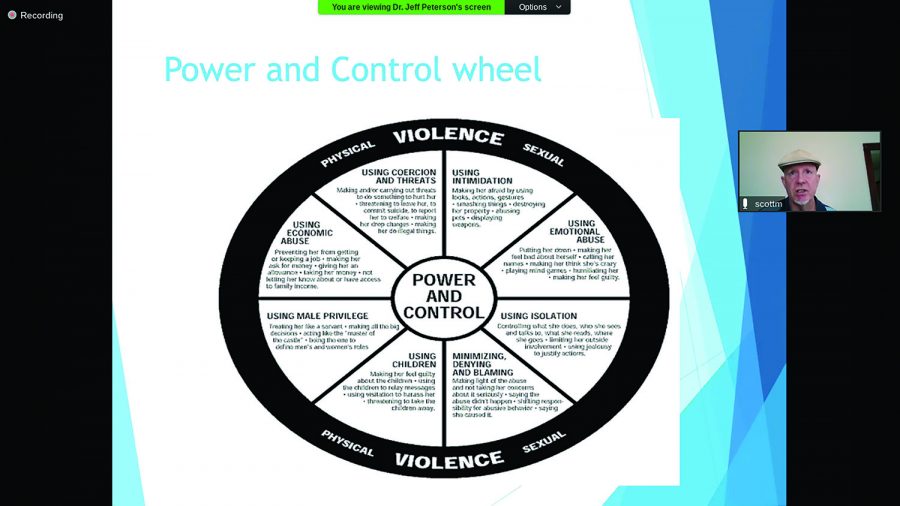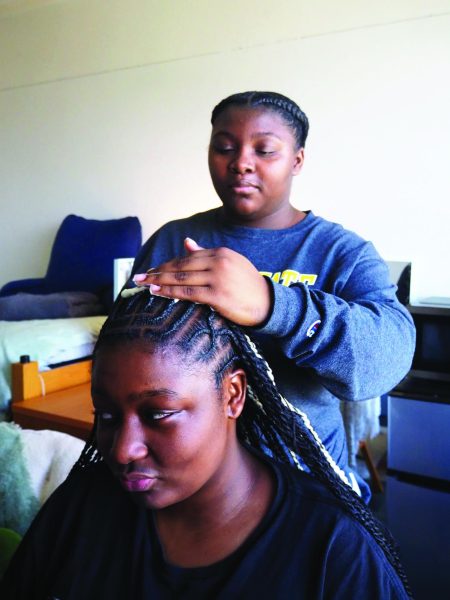Scott Munsen explains dating violence
March 31, 2021
A webinar addressing dating violence, hosted by Haven House and Chi Sigma Iota, was held on Zoom Friday, March 26. The webinar featured Scott Munsen, the outreach coordinator of Haven House.
It focused on how to tell if you or someone you love is in a toxic relationship and how to help end it.
The webinar also addressed how to tell if a relationship is healthy and how to make a toxic relationship healthy.
Munsen debunked certain myths surrounding dating violence such as: “It’s not abuse if it only happened once,” “It’s not abuse if my partner was under the influence,” “Only physical abuse counts as dating violence,” “Only women are victims of dating violence,” and “Only men are perpetrators of dating violence.”
Munsen stressed to participants that there is no excuse for abuse. A person never has the right to hurt another person, he said, even if they are angry or under the influence of drugs or alcohol. He also stressed that the victim is never at fault.
Munsen said even if you said something to make your partner mad, resulting in abuse, it is not your fault. You are not responsible for the actions of others, Munsen said.
On the subject of male victims, Munsen said it was important to remember that anyone can be a victim and anyone can be a perpetrator. He said to never dismiss someone’s pain based on their gender or age.
Though physical violence tends to be the most perceived, Munsen listed eight signs of abuse to look out for.
These are: using coercion and threats, using intimidation, using emotional abuse, using isolation, minimizing, denying and blaming, using children to gain leverage, using male privilege, and using economic abuse.
Munsen shared some statistics about dating violence such as 25% of teens tell no one of the abuse; 35% of teens have a friend who has been physically abused by a partner and 30% of teens intervened to help a friend after witnessing violence.
Fifty-seven percent of victims of abuse said the abuse happened during college. Fifty-eight percent of college students don’t know how to help someone in an abusive relationship.
After discussing the signs and types of dating violence, Munsen gave advice on how to cultivate a healthy relationship.
He said the most important step to take in achieving a healthy relationship is to spend significant time getting to know someone before completely committing.
“It takes roughly 50 hours of time together to move from mere acquaintance to casual friend,” Munsen said. “It takes 90 hours to go from that stage to simple friend status and more than 200 hours before you can consider someone your close friend.”
Another important aspect Munsen talked about is to build on honesty, trust, and respect.
It is imperative that you make decisions together and these decisions are made with the benefit of both people in mind. If only one person is calling all the shots, you cannot do what is best for the relationship.
Munsen advised having open discussions in your relationship, whether that be about personal issues or relationship issues.
It is also important to be able to live independently of each other. You must both have hobbies and interests outside of your relationship so that you do not base your entire identity on your relationship, thus becoming unable to survive without it.
Following this advice, Munsen gave some tips on how to help someone out of an abusive relationship.
One of the best things to do is to reach out and tell a friend in this situation that you are there for them and you want to help.
Listen to your friend and help them feel validated in their feelings. Help your friend recognize that it is not a normal or healthy relationship.
If the relationship ends, be sure to continue to be there for your friend as oftentimes the abuse worsens after the relationship ends as stalking usually begins. When Munsen finished his talk, he took questions and addressed concerns brought up by the audience.
Munsen addressed how chastity in a relationship can prevent abuse in a relationship by taking sex out of the relationship before it can be used as a tool for control. Munsen answered questions on how to identify if an abusive relationship is happening, addressing specific instances mentioned by the audience.
Finally, the webinar concluded with Munsen urging the audience to reach out for help.
If you or someone you know is in an abusive relationship, you can reach a professional at Haven House by calling 1-800-440-4633 or you can call 911.
You can also visit www.ncadv.org/protectyourself/SafetyPlan.php to set up a safety plan for yourself or your friend.










